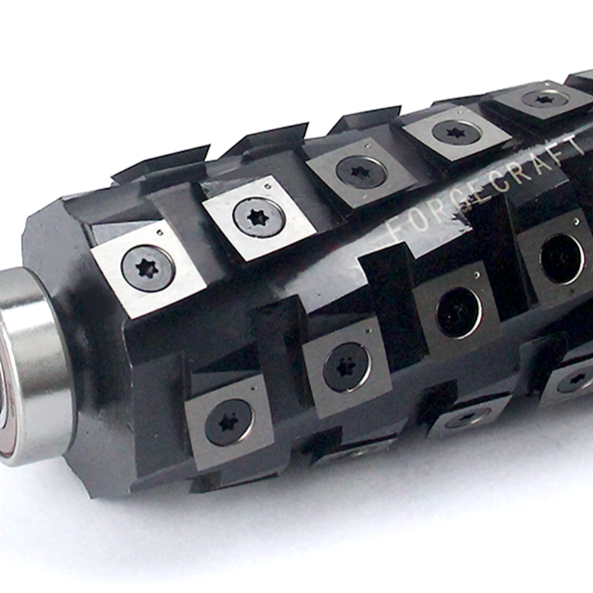Quiet Woodworking: How Spiral Cutterheads Reduce Noise and Tear-Out
Share
Woodworking should be satisfying — not deafening. Whether you're working in a garage, shared space, or just want a more enjoyable experience, upgrading to a spiral cutterhead can dramatically reduce the noise and improve the finish quality of your planer. Here's how this simple change makes a big impact.
The Problem with Straight Knife Cutterheads
Most stock planers — including the popular DeWalt DW735 — come equipped with straight knives. While serviceable for general planing, these blades come with trade-offs:
Loud and aggressive cutting action: Straight knives hit the wood all at once, generating more noise and vibration.
Frequent chipping and dulling: The entire blade edge takes the brunt of the force, dulling quickly and unevenly.
Tear-out on tricky grain: On woods like curly maple, walnut, or figured mahogany, straight blades often rip fibers instead of slicing them.
If your planer screams and shreds more than it sings and slices, your cutterhead might be the culprit.
How Spiral Cutterheads Help
Spiral cutterheads are designed differently from traditional straight knife systems — and that difference is key to their performance.
1. Shear Cutting Action
The inserts in a spiral cutterhead are positioned at a slight angle, creating a shearing effect that slices wood fibers cleanly rather than chopping them. This not only creates a smoother finish, but also reduces the noise of impact.
2. Segmented Carbide Inserts
Instead of one long blade, a spiral cutterhead uses dozens of small, square carbide inserts arranged in rows. These insert rows engage the wood gradually, reducing vibration and dispersing the cutting force.
3. Reduced Tear-Out
Because each insert slices at an angle, grain reversals and highly figured woods are handled with ease. You’ll notice significantly fewer gouges, chips, and patches of torn grain — even on difficult boards.
4. Better Chip Evacuation
The helical layout of the inserts helps direct chips and shavings out of the cut path more efficiently, reducing the chance of clogging and leaving cleaner surfaces behind.
Performance Benefits
🔇 Up to 50% Noise Reduction
Spiral cutterheads are noticeably quieter during operation. The reduction is especially obvious when working with hardwoods.
🪵 Improved Surface Finish
Expect a smoother, more uniform result straight off the planer — even on curly, knotty, or irregular wood.
🔁 Longer Tool Life & Easier Maintenance
Carbide inserts last much longer than steel blades. When they dull, just rotate the square insert to a fresh edge — no need to sharpen or replace entire knives.
🧹 Cleaner Workspace
Better chip control means less dust buildup and easier cleanup.
Ideal Use Cases
Spiral cutterheads aren't just for pros — they’re a great fit for any woodworker looking to improve comfort and results:
Home or Shared Workshops: Lower noise means fewer complaints from housemates, neighbors, or pets.
Nighttime or Garage Use: Planing late at night? Spiral heads help you get more done without waking the house.
Hobbyists Working with Exotic or Figured Wood: Ideal for users who regularly work with maple burl, zebrawood, walnut, or other tear-out-prone species.
Schools, Maker Spaces, or Small Production Shops: Less downtime for blade changes and better performance across different wood types.
Real-World Impact
Many woodworkers report that after switching to a spiral cutterhead, they no longer dread using the planer — and some even skip sanding entirely after planing. The quieter tone and improved cut quality make a big difference in both workflow and end results.
“It’s not just quieter — it’s smarter. The finish quality is so much better that I don’t even need to go straight to sanding anymore."
Conclusion
If your planer sounds like a war zone and you're tired of fighting tear-out, it’s time to upgrade. A spiral cutterhead doesn’t just improve your machine — it transforms the way you work. Whether you’re after quieter sessions, cleaner finishes, or less maintenance, this is one upgrade that pays for itself over time.




